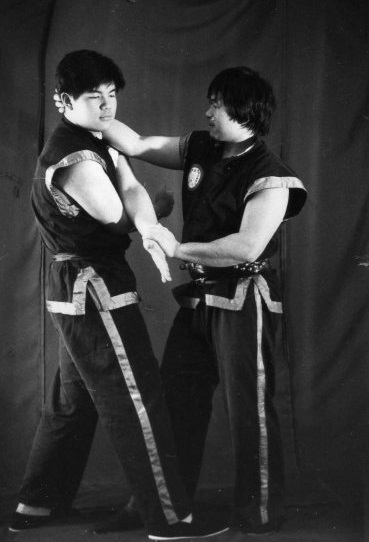Evolution of Wing Chun Kung Fu: How it Developed Over Time
By Maurice Novoa a master under the Yuen Kay Shan, Ip Man and Pan Nam lineages.
Introduction:
Wing Chun Kung Fu, a martial art renowned for its efficiency and practicality, has undergone a fascinating evolution over the course of its history. From its humble beginnings to its modern-day popularity, Wing Chun has adapted and grown, incorporating various influences and innovations. This article explores the key stages of development, highlighting the significant factors that have shaped the art into what it is today.
Origins at the Shaolin Monastery
Wing Chun’s roots can be traced back to the Shaolin Monastery, a renowned center for martial arts training and spiritual enlightenment. It is believed that the art was created by five elder monks who sought to develop a style that could be learned relatively quickly yet remain effective against longer-training martial arts. Their goal was to empower individuals with the means to defend themselves and resist oppression.
Adaptation in the Chinese Red Boat Opera
During a period of persecution, Wing Chun found a haven in the Chinese Red Boat Opera. The monks who practiced the style concealed their skills within the framework of the opera, blending their martial arts techniques with theatrical performances. This adaptation allowed them to continue honing their skills while escaping the attention of those who sought to suppress their practice.
Expansion of Techniques and Principles
Over time, the practitioners of the style expanded upon the original framework, adding new techniques and refining existing ones. This process of evolution was driven by a combination of personal experimentation and the practical experiences of those who utilized Wing Chun in self-defense situations. By incorporating effective techniques from various sources, the style developed into a well-rounded martial art.
Influence of Grandmaster Yuen Kay Shan
Grandmaster Yuen Kay Shan played a pivotal role in shaping the modern iteration of Wing Chun. His wealth and social status afforded him the freedom to explore and practice the art openly. Yuen Kay Shan meticulously studied the style and further refined its principles, systematizing the techniques into the forms known today.
Transmission to Ip Man and Bruce Lee
One of the most significant developments in Wing Chun’s evolution occurred when the art was passed down to Ip Man, a legendary figure in martial arts history. Ip Man further popularized the style by teaching it openly in Hong Kong. His most famous student, Bruce Lee, brought international recognition to Wing Chun through his successful career in film and martial arts.
Contemporary Developments and Schools
In recent times, Wing Chun has continued to evolve through the efforts of various practitioners and schools. Different lineages and instructors have emphasized specific aspects of the art, contributing to its diverse range of interpretations and training methodologies. This ongoing evolution ensures that the style remains a dynamic and adaptable martial art.
Ip Chun: Wing Chun Ambassador and Cultural Icon
Ip Chun, the youngest son of Ip Man, has played a significant role in preserving and promoting the martial art. As a Chinese scholar and martial artist, Ip Chun has dedicated his life to spreading the knowledge and principles to practitioners worldwide. His contributions have had a profound impact on the popularity and recognition of the style as a global martial art.
Establishing the Wing Chun Association

Ip Chun founded the Wing Chun Association, an organization that serves as a hub for Wing Chun practitioners and enthusiasts. With over 400,000 members worldwide, the association provides a platform for learning, training, and sharing insights into the art. Ip Chun’s vision for the association was to create a community where practitioners could gather, exchange knowledge, and preserve the authenticity of Wing Chun. Grandmaster Felix Leong received the first certificate in Ip Chun’s association marked 001 and it is proudly displayed in Leong’s martial arts academy in Adelaide South Australia.
Ip Chun’s Role in the “Ip Man” Movies
Ip Chun’s influence extended beyond the martial arts community when he played a significant role in the “Ip Man” movie trilogy. In these highly acclaimed films, which depicted the life and teachings of his father, Ip Man, Ip Chun portrayed one of his father’s influential teachers, Leung Bik. His appearance in the movies brought added authenticity and credibility to the portrayal of Wing Chun, captivating audiences worldwide.
Propelling Wing Chun to International Fame
The release of the “Ip Man” movies propelled Wing Chun to unprecedented international fame. Audiences around the world were introduced to the elegance, power, and effectiveness of the martial art through the captivating performances and storytelling of the films. The trilogy not only showcased the physical techniques the style but also highlighted its philosophy, principles, and the indomitable spirit of its practitioners.
Ip Chun’s involvement in the movies, coupled with his continued dedication to teaching and promoting the style, significantly contributed to the global recognition and popularity of the art. His efforts have inspired countless individuals to take up Wing Chun, fostering a vibrant and thriving community of practitioners worldwide.
Conclusion
The evolution of Wing Chun Kung Fu is a testament to its enduring practicality and effectiveness. From its origins at the Shaolin Monastery to its adaptation in the Chinese Red Boat Opera, and from the influence of Grandmaster Yuen Kay Shan to its transmission to Ip Man and Bruce Lee, the style has continuously developed and grown over time. Today it thrives as a martial art that combines tradition with innovation, providing practitioners with a comprehensive system of self-defense and personal growth.
Ip Chun’s contributions to the preservation and promotion of the style cannot be overstated. His establishment of the Wing Chun Association and his portrayal in the “Ip Man” movies have played a pivotal role in expanding the reach and appeal of the style on a global scale. As a Wing Chun ambassador and cultural icon, Ip Chun continues to inspire practitioners, ensuring that the style’s legacy remains vibrant and influential for generations to come.

